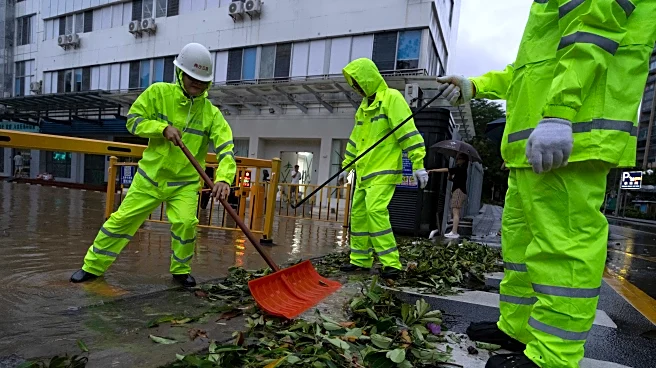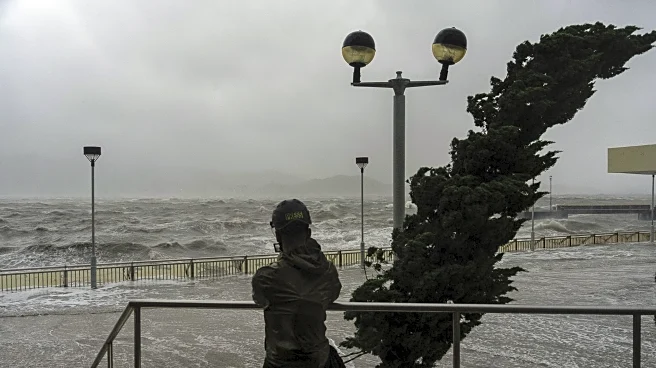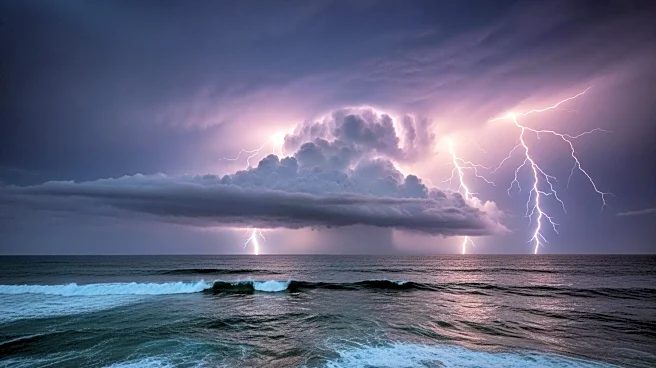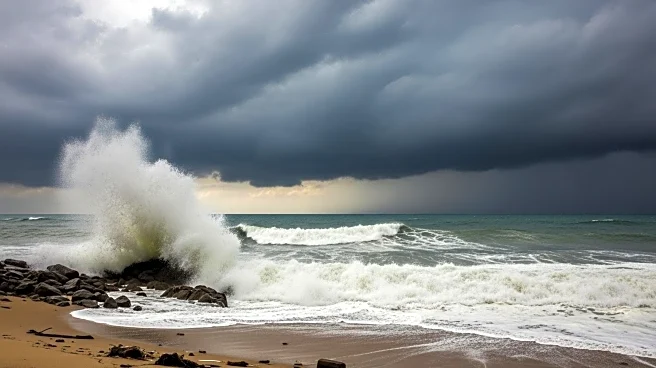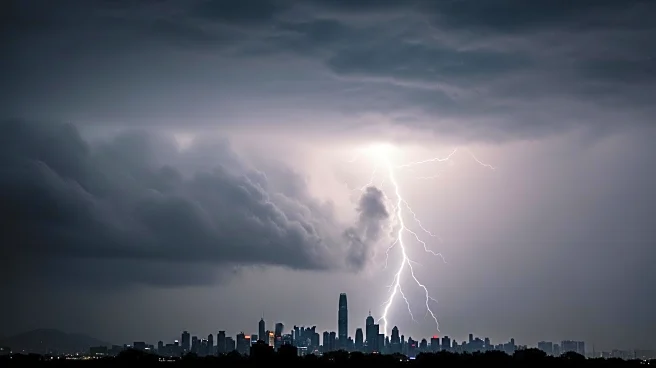What's Happening?
Typhoon Ragasa, one of the strongest storms to hit Asia in recent years, has caused significant destruction in Hong Kong and southern China. The typhoon, which previously wreaked havoc in Taiwan and the Philippines, brought massive waves and strong winds to the region. In Hong Kong, the storm led to the cancellation of flights and closure of schools and businesses. The typhoon made landfall in Guangdong province, prompting the evacuation of over 2 million people. The storm's impact included uprooted trees, damaged infrastructure, and widespread flooding. In total, Ragasa has resulted in dozens of fatalities across the affected regions.
Why It's Important?
The impact of Typhoon Ragasa highlights the vulnerability of densely populated coastal areas to extreme weather events. The storm's devastation underscores the need for improved infrastructure and emergency preparedness in regions prone to typhoons. The economic implications are significant, with disruptions to transportation, business operations, and potential long-term effects on local economies. The response to such natural disasters is critical in mitigating human and economic losses, emphasizing the importance of robust disaster management strategies.
What's Next?
As Typhoon Ragasa continues to move westward, it is expected to weaken, but the aftermath will require extensive recovery efforts. Authorities in the affected regions will focus on restoring services, repairing infrastructure, and providing aid to displaced populations. The event may prompt discussions on enhancing climate resilience and infrastructure to better withstand future storms. Additionally, international aid and cooperation may play a role in supporting recovery efforts.

